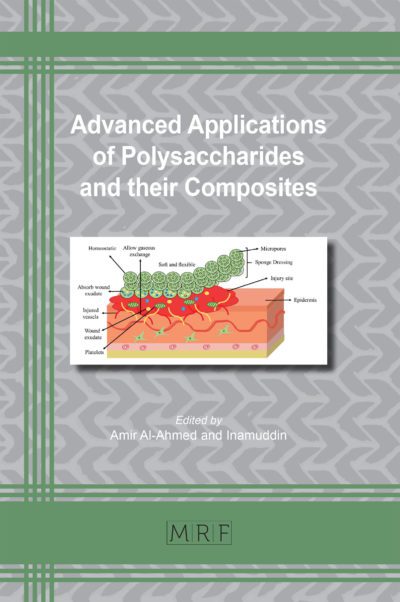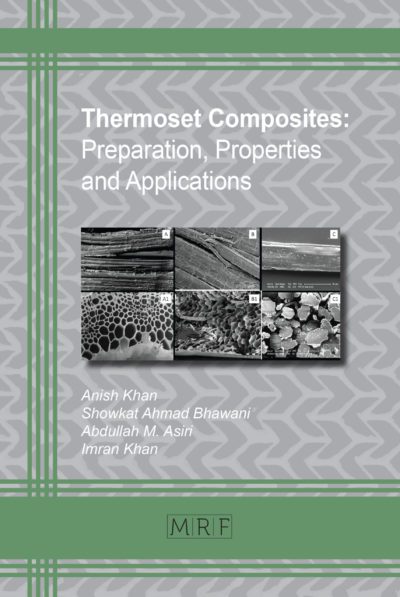An investigation into the relationship between hemisphere tooling parameters and thickness changes during the thermoforming of a thermoplastic composite
WHITE Kari D., SHERWOOD James A.
download PDFAbstract. Thermoforming is an economical and fast means of transforming a flat sheet of thermoplastic composite material into a complex shape. The two-step process consists of a preform phase that transforms the laminates to near net shape ply stacks and of a subsequent consolidation step that employs pressure and heat to join the preforms into a final part. During the preform step, many aspects of the process must be regulated to minimize undesirable affects. A binder ring applies pressure to the material to induce in-plane tension, aiding in the initiation of shear deformation in the laminate. The material increases in thickness as it undergoes in-plane shear to conform to the preform shape. The degree of shear varies over the part, creating variations in thickness and subsequent challenges with uniform consolidation. While material attributes and processing parameters are critical in successful preforming, refining the tool geometry can also lead to significant changes in the preform outcome. Although many of these challenges have been addressed in a design-build-test approach, the goal of this research is to develop a virtual process that can guide design changes in the tooling to achieve a well consolidated part. A discrete mesoscopic modeling approach was implemented in LS-DYNA using thickness-change shell elements (ELFORM25) that can incorporate 3D material properties, including through-plane thickness changes. The current state of the simulation effectively incorporates material behavior, tool/ply friction and thickness changes that reflect variations in pressure. The simulation is used to investigate the significance of the punch/die gap size and the die fillet radius on the tooling geometry. The modeling approach was verified through comparison to experimental results with two types of tooling geometry. A parametric study was then performed to investigate tooling changes in relation to the number of layers, or thickness, of a unidirectional ultra-high molecular weight polyethylene (UHMWPE) material, DSM Dyneema® HB210. The outcomes of the result were evaluated by comparing wrinkle formation, shear deformation and thickness variations. The research shows that the radius of the die fillet has a significant impact on the uniformity of thickness in the preform. A combination of fillet radius and die affects can lead to more desirable outcomes in terms of wrinkle formation and thickness uniformity.
Keywords
Composite, Thermoforming, Simulation, Tooling, UHMWPE
Published online 4/24/2024, 10 pages
Copyright © 2024 by the author(s)
Published under license by Materials Research Forum LLC., Millersville PA, USA
Citation: WHITE Kari D., SHERWOOD James A., An investigation into the relationship between hemisphere tooling parameters and thickness changes during the thermoforming of a thermoplastic composite, Materials Research Proceedings, Vol. 41, pp 513-522, 2024
DOI: https://doi.org/10.21741/9781644903131-57
The article was published as article 57 of the book Material Forming
![]() Content from this work may be used under the terms of the Creative Commons Attribution 3.0 license. Any further distribution of this work must maintain attribution to the author(s) and the title of the work, journal citation and DOI.
Content from this work may be used under the terms of the Creative Commons Attribution 3.0 license. Any further distribution of this work must maintain attribution to the author(s) and the title of the work, journal citation and DOI.
References
[1] Dangora, L.M., C.J. Mitchell, J. Sherwood, and J.C. Parker, Deep-Drawing Forming Trials on a Cross-Ply Thermoplastic Lamina for Helmet Preform Manufacture. Journal of Manufacturing Science and Engineering, 2017. 139(3): p. 031009. https://doi.org/10.1115/1.4034791
[2] Ersoy, N., T. Garstka, K. Potter, M.R. Wisnom, D. Porter, and G. Stringer, Modelling of the spring-in phenomenon in curved parts made of a thermosetting composite. Composites Part A: Applied Science and Manufacturing, 2010. 41(3): p. 410-418. https://doi.org/10.1016/j.compositesa.2009.11.008
[3] Ersoy, N., K. Potter, M.R. Wisnom, and M.J. Clegg, An experimental method to study the frictional processes during composites manufacturing. Composites Part A: Applied science and manufacturing, 2005. 36(11): p. 1536-1544. https://doi.org/10.1016/j.compositesa.2005.02.010
[4] Larberg, Y.R. and M. Åkermo, On the interply friction of different generations of carbon/epoxy prepreg systems. Composites Part A: Applied Science and Manufacturing, 2011. 42(9): p. 1067-1074. https://doi.org/10.1016/j.compositesa.2011.04.010
[5] Lightfoot, J.S., M.R. Wisnom, and K. Potter, A new mechanism for the formation of ply wrinkles due to shear between plies. Composites Part A: Applied Science and Manufacturing, 2013. 49: p. 139-147. https://doi.org/10.1016/j.compositesa.2013.03.002
[6] Arafath, A.R.A., R. Vaziri, and A. Poursartip, Closed-form solution for process-induced stresses and deformation of a composite part cured on a solid tool: part I–flat geometries. Composites Part A: Applied Science and Manufacturing, 2008. 39(7): p. 1106-1117. https://doi.org/10.1016/j.compositesa.2008.04.009
[7] Breuer, U., M. Neitzel, V. Ketzer, and R. Reinicke, Deep drawing of fabric‐reinforced thermoplastics: Wrinkle formation and their reduction. Polymer composites, 1996. 17(4): p. 643-647. https://doi.org/10.1002/pc.10655
[8] Lee, J.S., S.J. Hong, W.-R. Yu, and T.J. Kang, The effect of blank holder force on the stamp forming behavior of non-crimp fabric with a chain stitch. Composites science and technology, 2007. 67(3-4): p. 357-366. https://doi.org/10.1016/j.compscitech.2006.09.009
[9] Lin, H., J. Wang, A. Long, M. Clifford, and P. Harrison, Predictive modelling for optimization of textile composite forming. Composites Science and Technology, 2007. 67(15-16): p. 3242-3252. https://doi.org/10.1016/j.compscitech.2007.03.040
[10] Obermeyer, E. and S.A. Majlessi, A review of recent advances in the application of blank-holder force towards improving the forming limits of sheet metal parts. Journal of Materials Processing Technology, 1998. 75(1-3): p. 222-234. https://doi.org/10.1016/S0924-0136(97)00368-3
[11] Akkerman, R., R. Ten Thije, U. Sachs, and M. De Rooij. Friction in textile thermoplastic composites forming. in Proceedings of the 10th international conference on textile composites-TEXCOMP. 2010.
[12] Jauffres, D., J. Sherwood, C. Morris, and J. Chen, Discrete mesoscopic modeling for the simulation of woven-fabric reinforcement forming. Vol. 3. 2010. 1205-1216. https://doi.org/10.1007/s12289-009-0646-y
[13] Dangora, L.M., C.J. Mitchell, and J.A. Sherwood, Predictive model for the detection of out-of-plane defects formed during textile-composite manufacture. Composites Part A: Applied Science and Manufacturing, 2015. 78: p. 102-112. https://doi.org/10.1016/j.compositesa.2015.07.011
[14] Haufe, A., K. Schweizerhof, and P. Dubois, Properties & Limits: Review of Shell Element Formulations. 2013: https://www.researchgate.net/publication/312053480_Properties_Limits_Review_of_Shell_Element_Formulations.
[15] White, K.D., C. Krogh, and J.A. Sherwood. Investigation of shear characterization of a UHMWPE unidirectional cross-ply for finite element simulation of composite processing. in AIP Conference Proceedings. 2019. AIP Publishing LLC. https://doi.org/10.1063/1.5112522
[16] Fetfatsidis, K.A., L.M. Gamache, J.L. Gorczyca, J.A. Sherwood, D. Jauffrès, and J. Chen, Design of an apparatus for measuring tool/fabric and fabric/fabric friction of woven-fabric composites during the thermostamping process. International Journal of Material Forming, 2013. 6(1): p. 1-11. https://doi.org/10.1007/s12289-011-1058-3
[17] Campshure, B., K.D. White, and J.A. Sherwood, Friction Characterization of UHMWPE Cross-Ply Composite Sheets for Thermoforming Processes. 2021. https://doi.org/10.25518/esaform21.759
[18] White, K.D., B. Campshure, and J.A. Sherwood, Effects of Thickness Changes and Friction during the Thermoforming of Composite Sheets. 2021. https://doi.org/10.25518/esaform21.506
[19] DSM Dyneema® Industries. 2018 [cited 2017 June]; Available from: https://www.dsm.com/products/dyneema/en_US/home.html.
[20] White, K., M. Yeager, J. Sherwood, T. Bogetti, and J. Cline, Material Characterization and Finite Element Modeling for the Forming of Highly Oriented UHMWPE Thin Film and Unidirectional Cross-ply Composites, in ASC 33rd Technical Conference. 2018: Seattle, WA. https://doi.org/10.12783/asc33/25944
[21] White, K.D., L. Dangora, and J.A. Sherwood, Temperature Dependent Flexural Rigidities and Thickness Investigation, in ASC 31st Technical Conference. 2017: Williamsburg, VA.














